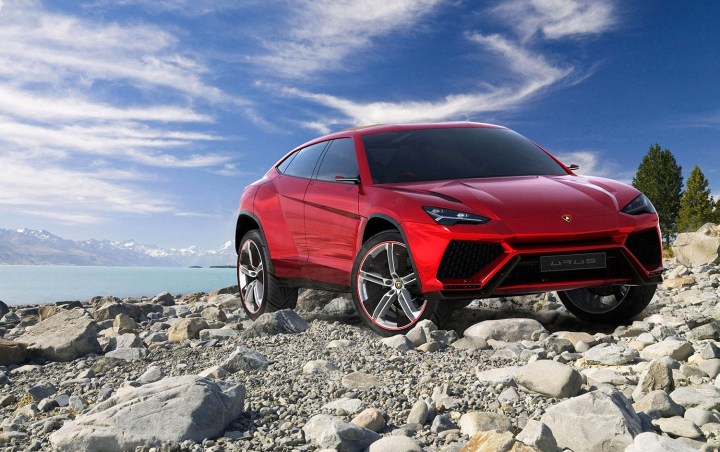
It was developed as a practical, family-friendly model with a spacious back seat and a big trunk. It’s endowed with the genes that make the Aventador S one of the best high-performance machines on the planet, yet it’s capable of holding its own off the beaten path. It will become Lamborghini’s very first turbocharged model when it breaks cover, and it will later inaugurate the brand’s first series-produced plug-in hybrid drivetrain. In short, it’s unlike any model the Raging Bull has built in its illustrious 54-year history.
We sat down with Maurizio Reggiani, the head of Lamborghini’s research and development department, to get more insight on the Urus, and what it means for the rest of the brand’s lineup.
Digital Trends: Tell us more about how you can integrate hybrid technology into the Lamborghini lineup.
Maurizio Reggiani: As you know, the first version of the Urus will get a gasoline-powered engine; the hybrid model will come later. We think hybrid technology is also important for our super sport cars, though it’s clear that, in my personal opinion, at this moment it’s not ready in terms of packaging and in terms of weight.

But, for the Urus it will be perfect, because it’s easier to integrate from a packaging point of view, and from a weight point of view. The Urus is the right choice for our first application of a PHEV drivetrain.
So, you’re saying we could see a hybrid drivetrain in a super sport car?
Not now, but in the future it will be possible. In the next few years, battery and engine technology will really improve because there is a high level of expectations. I know the industry is working hard to reduce the size and increase the performance of batteries.
I expect for a super sport car – when the time comes – we’ll go with a plug-in hybrid drivetrain, too. Clearly, in a super sport car we’re more concerned about the e-boost effect than about electric autonomy. You must have both, but with an emphasis on the boost.
One of the biggest problems is packaging. Where do you put the battery pack? You must place the center of gravity as low as possible, so you can’t put the battery pack wherever there’s extra space – in the front trunk or in the rear, for example. If you do that the car is off balance. It needs to be in an area that is in the middle of the car, and at the moment that’s not so easy.
But you solved the weight and balance issues with the Urus?
Hybrid technology is also important for our super sport cars.
In the SUV weight is also important, but it’s not as fundamental as in a super sport car. You have a big trunk, you can install a battery pack close to the rear firewall and it won’t dramatically change how the car handles.
I think the perfect DNA for the super sport SUV will be the first version, with a V8 that makes roughly 650 horsepower. It will offer best-in-class power-to-weight ratio. The plug-in hybrid model that will come later will be our first attempt at reducing our fleet’s average CO2 emissions, but it’s clear you cannot expect it to offer the performance of the V8. We want to have a button or something that can generate e-boost to provide better acceleration, but it will still be heavier than the other version.
Will the hybrid still be able to go off-road?
Yes, of course, the SUV was born to go off-road. It’s clear the best off-road version will be the one with the V8, because in off-road driving you need to have as little weight as possible. The plug-in model won’t be as capable off-road, but it will still be good.
Will different driving modes modify parameters for various types of roads?
We want to have the classic driving mode of a super sport car, plus a driving mode for off-road driving. For low adherence, for gravel, for sand. The suspension is pneumatic, so the different driving modes will change the ride height.



